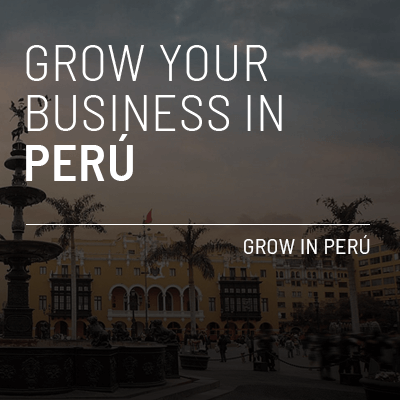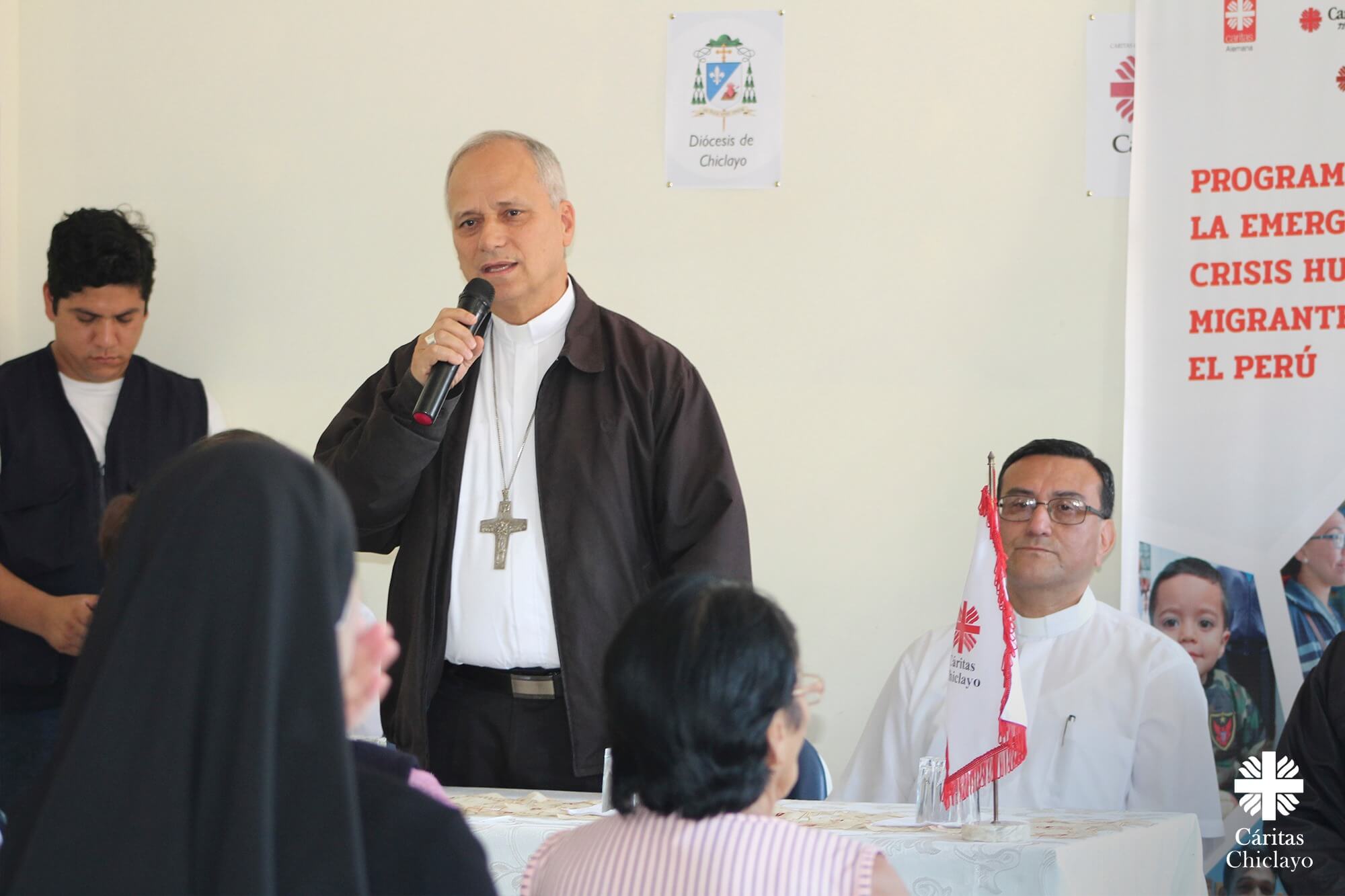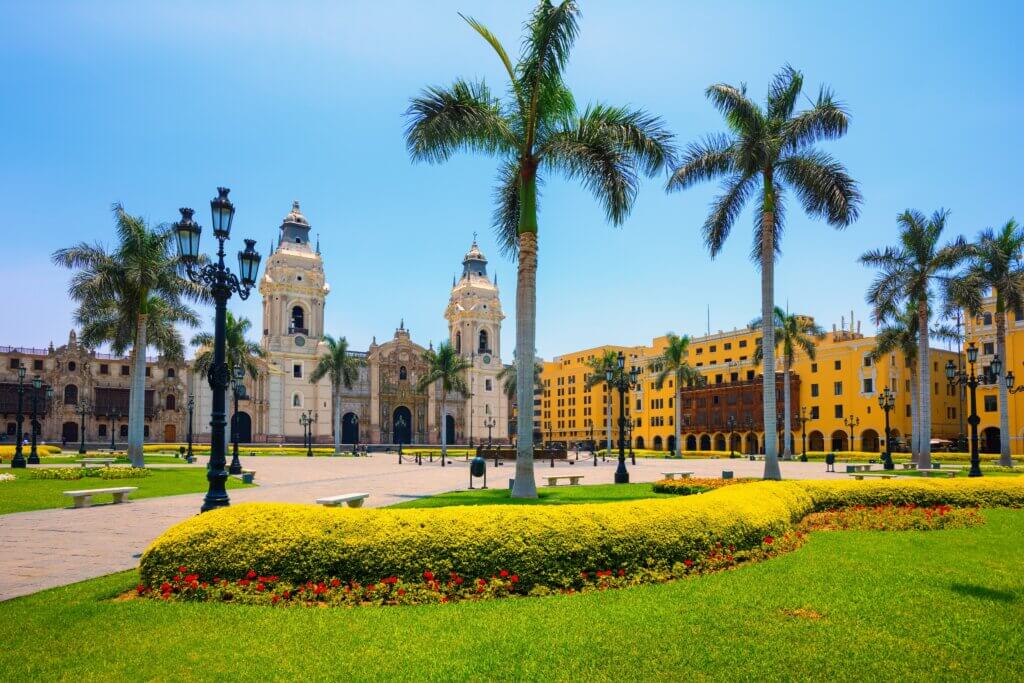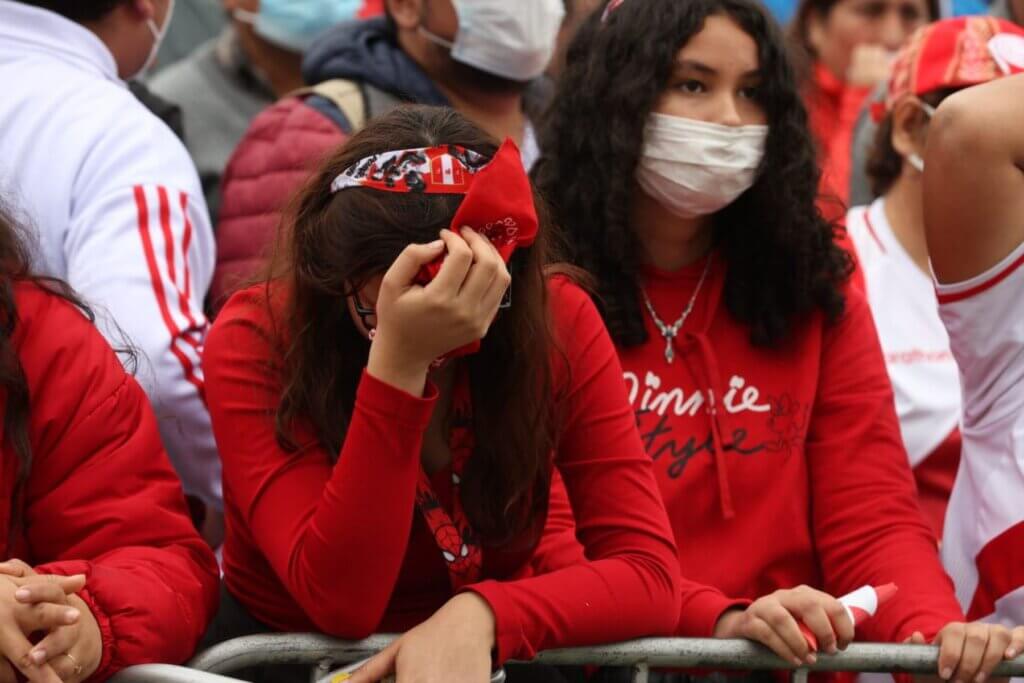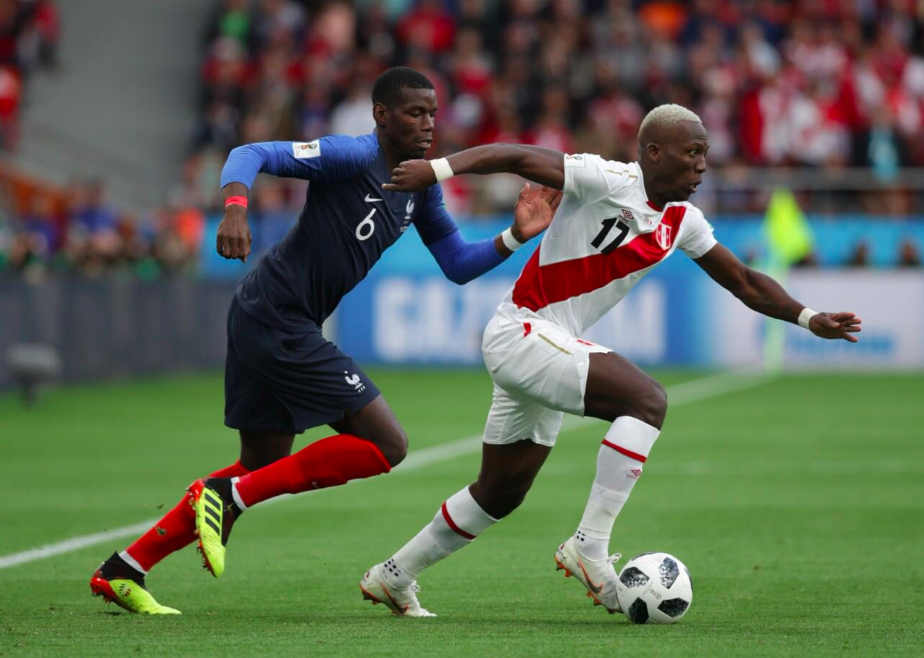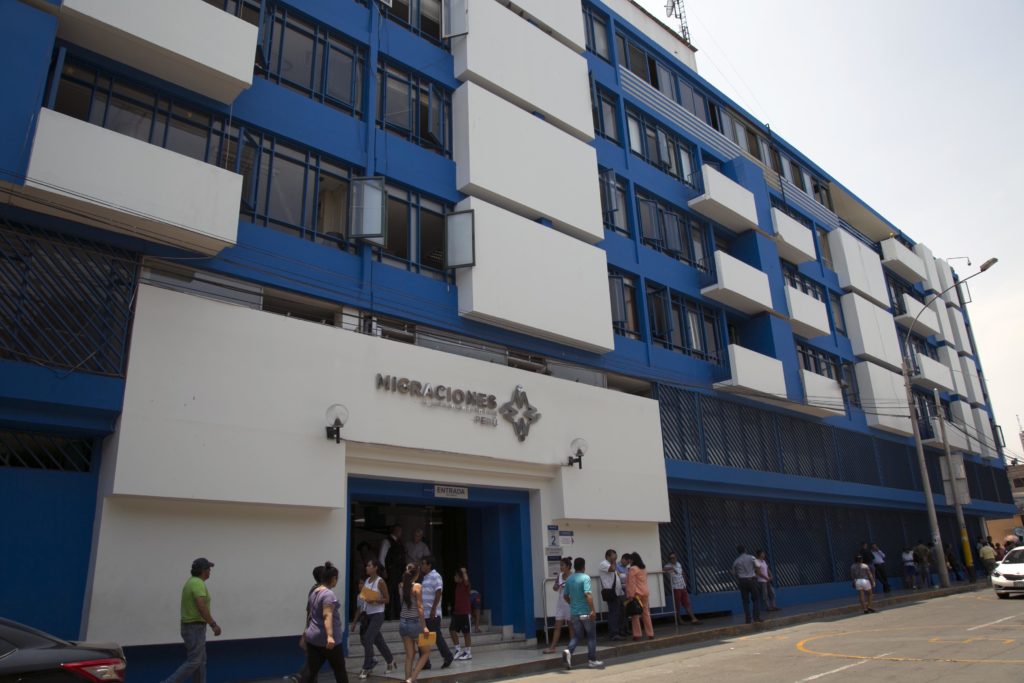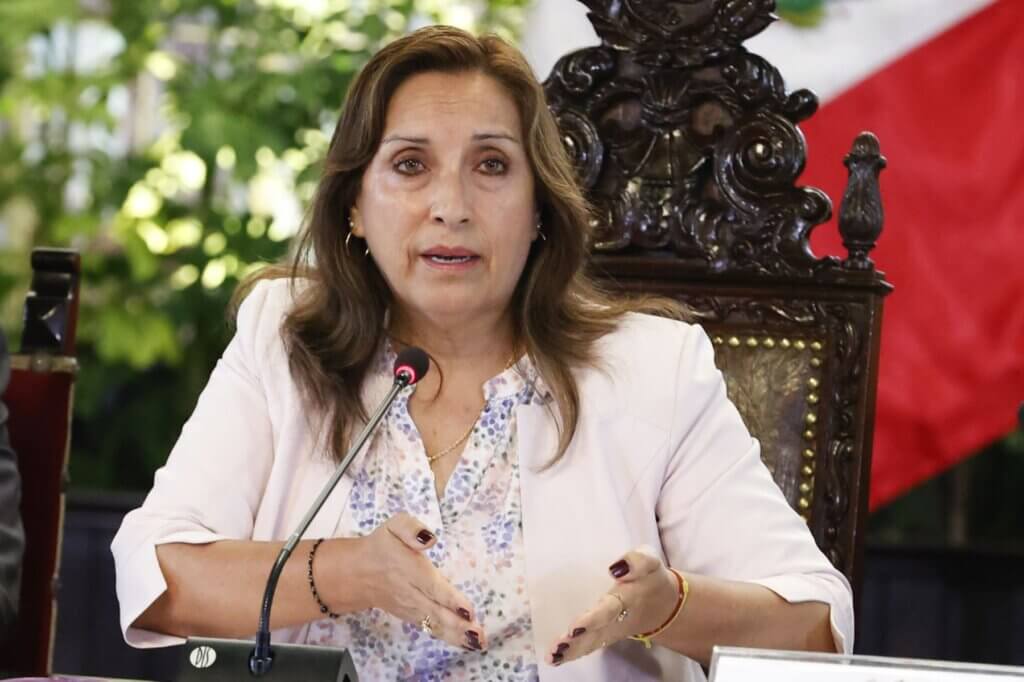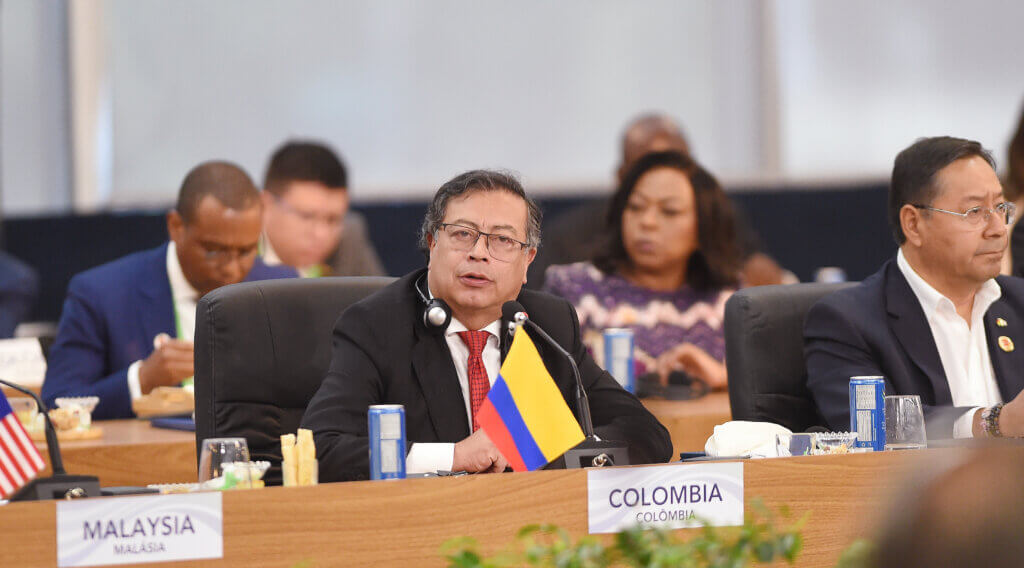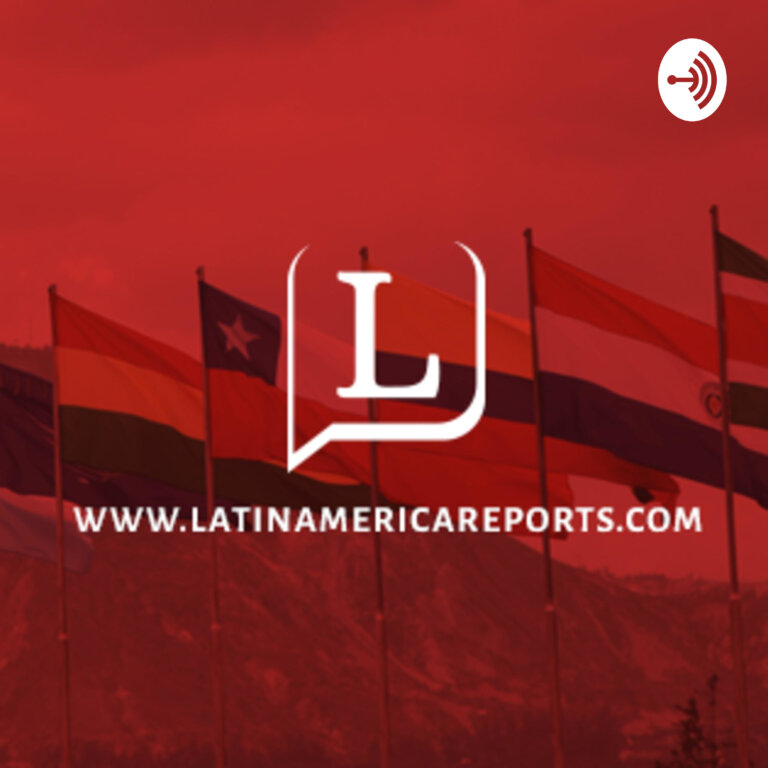Chiclayo, Peru — For nearly a decade, the man who is now Pope Leo XIV — then-Bishop Robert Prevost — left an indelible mark in northern Peru as Bishop of the Diocese of Chiclayo and Chairman of the Board of Caritas Chiclayo.
Between 2014 and 2023, he led a tireless social mission characterized by his closeness, managerial skill, and deep commitment to those most in need. His testimony was shaped through relentless work amid natural disasters, health crises, and structural poverty.
Leo XIV is the first Augustinian pope and the second American pontiff after Francis. He was born on September 14, 1955, in Chicago, and is a naturalized Peruvian citizen, who speaks five languages- English, Spanish, Italian, French and Portuguese- in addition to reading Latin and German.
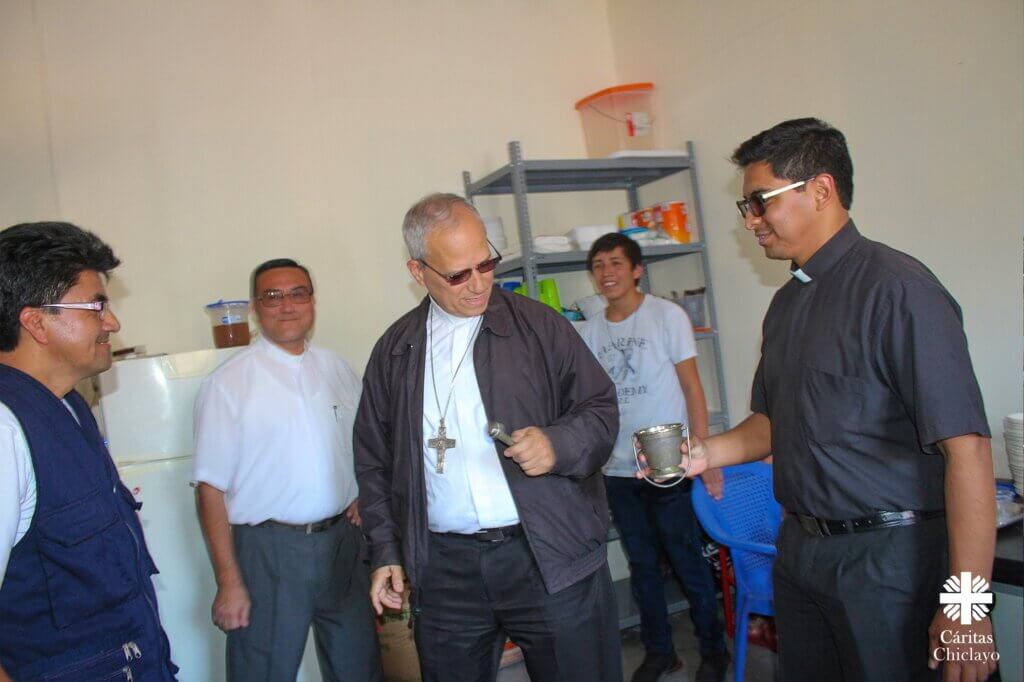
Pope Leo XIV’s relationship with Peru began in 1985, when he was sent as a missionary to the city of Chulucanas, in Peru’s northwestern Piura region. Since then, his ecclesial identity has been deeply shaped by the Peruvian Church.
When Bishop Robert Prevost arrived in the Diocese of Chiclayo in 2014, he quickly gained the trust of the Caritas team. Janinna Sesa Córdova, former director of Caritas Chiclayo, who worked closely with him for about eight years, says he was truly a shepherd “who smelled like his sheep.”
“During the COVID-19 pandemic, I got infected after taking my mother to a medical appointment. Things got complicated, and I spent more than 15 days hospitalized on oxygen. That’s when I felt the closeness of Bishop Robert,” she told Peru Reports from Chiclayo.
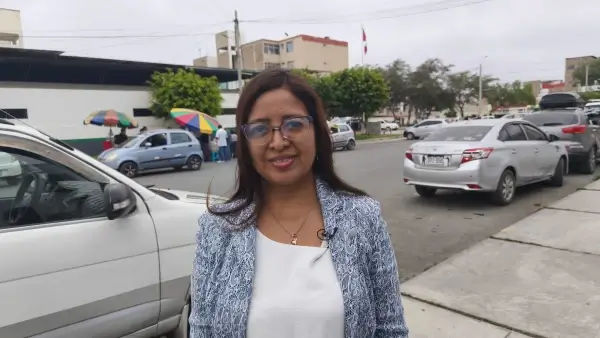
“He sent me daily messages and voice notes. I remember him saying, ‘Forget about work — your health is the priority. We need you well.’ That helped me tremendously, emotionally, to move forward,” she recalled, highlighting the bishop’s concern for her and the entire team.
Sesa, who led Caritas Chiclayo from 2014 to 2024, met the then-bishop shortly after his arrival.
“I remember he visited Caritas’ offices. As it happens when a new bishop arrives, we expected a polite farewell, but instead he told us: ‘No, I want us to keep working together.’ From the start, his warmth gave us unique confidence,” she recalled.
Prevost maintained his collaborative attitude throughout his tenure.
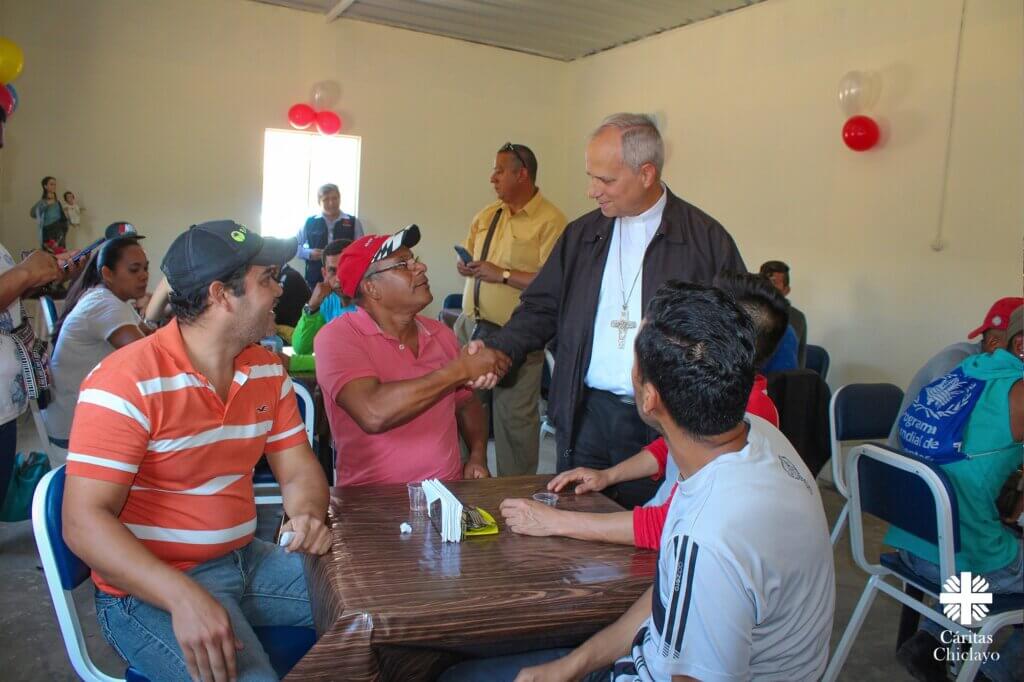
His role during the 2017 El Niño Costero phenomenon
When the El Niño Costero phenomenon struck between December 2016 and May 2017, Bishop Prevost led the emergency response efforts in Chiclayo, confronting devastating floods that affected more than half a million people.
The flooding hit the regions of Lima, Ica, Arequipa, Piura, Tumbes, Chiclayo, Ancash, and La Libertad. The National Emergency Operations Center (COEN) estimated over 150 deaths from the natural disasters, while the National Civil Defense Institute (INDECI) reported nearly 200,000 people displaced by mid-May 2017.
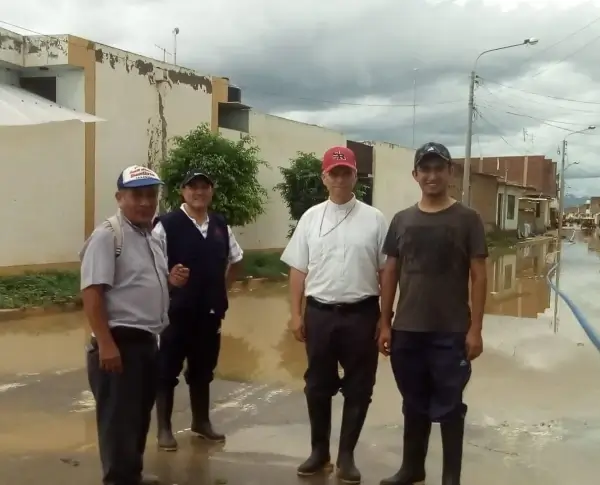
“The overflow of the La Leche River caused serious damage in many districts. Bishop Robert encouraged us and rallied business leaders to donate and help,” Sesa recalled.
“But he didn’t just lead — he personally joined in. He would arrive in a truck and help load the aid kits. Sometimes we tried to stop him, but he’d say, ‘I’m here to help, to serve.’”
Bringing oxygen to a region crushed by the Pandemic
During the COVID-19 pandemic, the leadership of the now Pope Leo XIV became especially vital, as oxygen shortages and economic collapse led to more than 200,000 deaths across the country, according to Reuters.
Under his guidance, Caritas Chiclayo launched the “Oxygen of Hope” campaign, raising enough funds to purchase two oxygen plants — crucial resources as the national health system collapsed.
In a video posted on Facebook, Bishop Prevost explained that by March 2021, they had raised $383,000, double their initial target of $190,000.
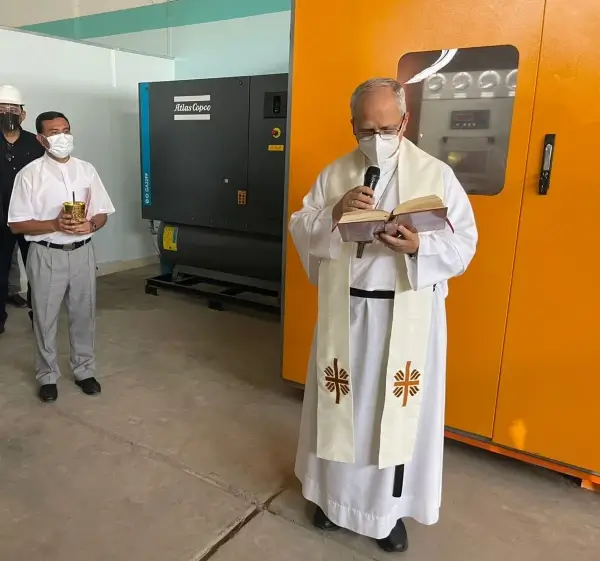
“Thanks to his efforts and both national and international donors, we were able to buy not one but two oxygen plants, which helped many people for free. We saw people crying when picking up tanks — some lives were saved, and that was deeply moving,” the former director said.
The logistics were exhausting, but Bishop Prevost never stayed on the sidelines, Sesa explained.
“We distributed oxygen in two shifts, morning and afternoon, until nightfall. He would come to check in and say, ‘There’s more need out there — let’s do one more shift. I’ll join you.’ That touched us deeply. We started doing three shifts, reaching more people. Many sent messages of thanks: ‘Thank you, Bishop, for saving my life.’”
“He never walked by without stopping”: Concern for rural and remote areas
Rural and remote communities were also a priority for Bishop Prevost.
“When he traveled to the highlands of Lambayeque —an area difficult to access— he would drive his own truck and bring humanitarian aid he personally secured. He reached high-altitude areas where few others go,” Sesa said.
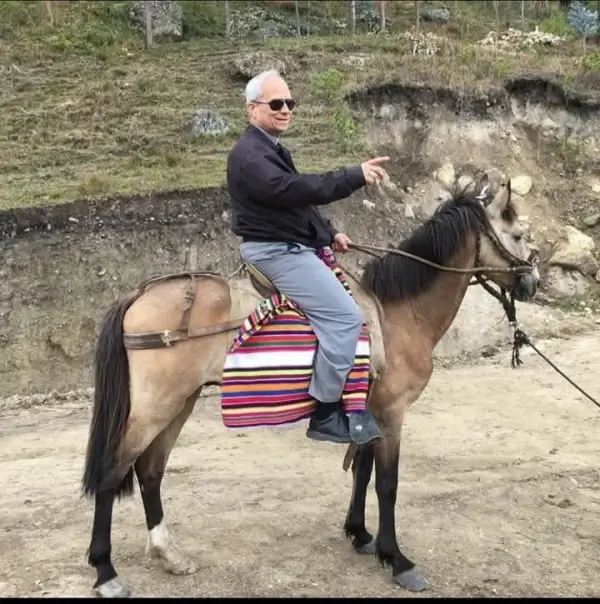
“There are many needs there —malnutrition, food shortages— and he visited regularly. He greeted everyone, from the highest authority to the humblest person,” she added.
His final campaign in Chiclayo: Humanitarian aid after Cyclone Yaku
In March 2023, just before departing for the Vatican, the future Pope Leo XIV expressed Pope Francis’ solidarity with the victims of Cyclone Yaku in Peru via a message recording from an affected area and the launching of an aid campaign. From the disaster zone, he announced the initiative Peru Lends a Hand: United for Lambayeque, aimed at helping victims in northern Peru.
“Many towns have suffered. This is one of my final messages from the diocese, and I do it from the heart,” Bishop Prevost said in a video that went viral.
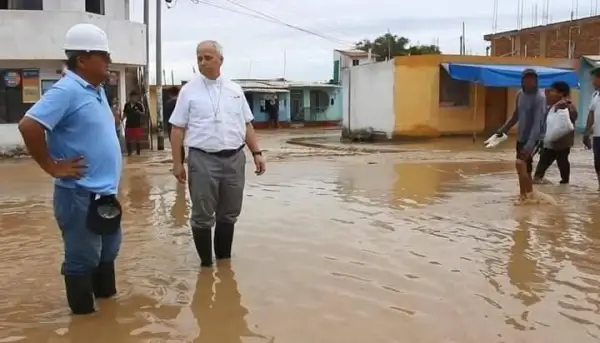
Sesa recounted that the Caritas team thought the bishop was preparing his departure, but “he showed up in boots, a helmet, and accompanied by two other priests. They joined the aid efforts in Illimo and Pacora.”
“That’s when the viral photo was taken: in boots, wearing a helmet, handing out supplies and giving blessings. That video was his active farewell to Chiclayo,” she said.
A well-rounded shepherd who solved every problem
“We always told him, ‘You’re so well-rounded,’ because if a truck broke down, he knew mechanics. Once, he even served as translator for an Italian foundation. Thanks to him, a project for children was approved. That’s how efficient he was,” Sesa noted.
In health and energy matters, he impressed those around him. “He had such vitality. He would go from Chiclayo to the highlands and back. He even temporarily took charge of the Diocese of Callao. Sometimes I’d find him replying to messages late at night because he hadn’t had time during the day… he made time for everyone,” she recalled.
Prayer as his driving force
Amid all his activity, Prevost never neglected his spiritual life. “During trips to remote areas, we always saw him praying the rosary. He was very devout. He celebrated Sunday Masses, visited parishes, confirmed young people in schools. That was his priority,” Sesa emphasized.
“That’s why today young people post photos of him confirming them. The people of Chiclayo love him so much,” she said.
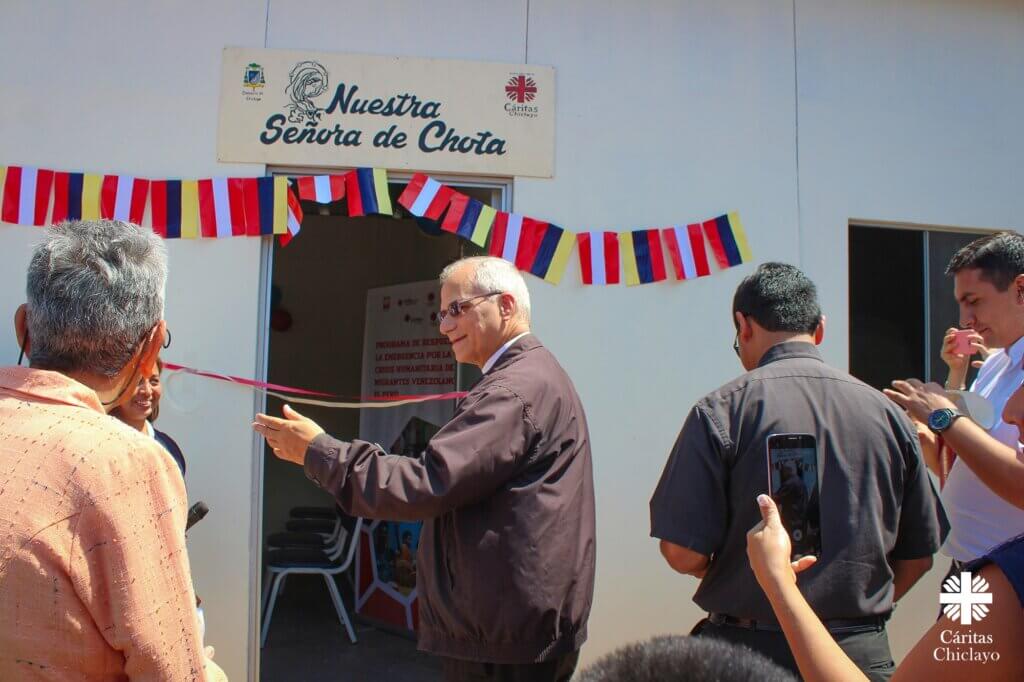
Today, as Pope Leo XIV, he is known across the world. But for those who knew him in Peru, the pope remains the same pastor who carried food, distributed oxygen, and blessed both his collaborators and the poorest.
Sesa affirms that Bishop Prevost cultivated a fraternal relationship with his team. “Every year, it became a tradition for the Caritas team and volunteers to share Christmas dinner with the diocesan team. We would bring roast pig from Mórrope, and he loved it,” she recalled with a smile.
“We ended up singing carols. When it came to the English verses, we would all go quiet — because his English was way better,” she laughed.
The legacy of Leo XIV in priestly vocations in northern Peru
In addition to his strong social commitment, Bishop Robert Prevost — now Pope Leo XIV — also left a profound mark on the promotion of vocations.
According to Fr. Marcos Ballena, formator and current administrator of the Santo Toribio de Mogrovejo Major Seminary in Chiclayo, Prevost “was the main promoter of priestly vocations in the region.”
Ballena further highlights that under the now-pope’s leadership, the seminary welcomed not only young men from the diocese, but also from neighboring jurisdictions like Chota, Chachapoyas, and Chimbote.
“He was a person who cared about every detail of formation. He made sure the seminary’s projects progressed, that there were enough books, and he was always available to accompany the seminarians,” the priest told Peru Reports.
Ballena remembers retreats with particular gratitude, when Bishop Prevost would speak directly to the seminarians to inspire them: “He would give them a vocational meditation, a guiding word. He knew how to reach the hearts of young people. For many of them, he was like a father.”
Currently, the seminary hosts 31 seminarians. It was there that his election as Pope was felt with deep emotion, as seminarian Fabián Rosado Nolasco, from Piura and part of the Diocese of Chimbote, shared with Peru Reports.
“We were watching the broadcast, and when they said his name, we all started screaming and crying. He was our bishop, we knew him closely… He’s a pope who carries the heart of this land.”
Bishop Prevost’s support for vocations was also felt within his own religious order, the Order of St. Augustine. Fr. Luis Fernando Oblitas, known as Fray Pipe, now an Augustinian priest at San Agustín School in Chiclayo, was ordained deacon and priest by Bishop Prevost.
“One day he came for a confirmation, and I told him, ‘Bishop, my ordination has been approved — I’d like to be ordained here.’ He replied, ‘And who’s going to ordain you?’ I said, ‘You.’ And he said, ‘Oh, me! What an honor,’” he recalled with a laugh while in conversation with Peru Reports.
Another of the pope’s gestures touched him more, however. “After the ordination Mass, [the] Bishop surprised me. He said, ‘I want to use my privilege as ordaining bishop to ask for your first blessing.’ And he knelt in front of me. It was very moving… it speaks to his humility.”
Fray Pipe has known Leo XIV since 2012, when the then-future pope was Prior General of the Augustinian Order. He believes that his papal motto, In Illo uno unum (“In Him who is one, we are one”) perfectly reflects the Augustinian motto he lived by: the pursuit of unity, communion, walking together.
On May 31, Pope Leo XIV ordained 11 new priests for the Diocese of Rome in St. Peter’s Basilica. In his homily, he emphasized the need for a credible Church — something he lived firsthand in northern Peru: “Together we will rebuild the credibility of a wounded Church, sent to a wounded humanity, within a wounded creation.”
He also concluded with a phrase that already resonates as the emblem of his pontificate:
“It’s not necessary to be perfect — but it is necessary to be credible.”
A much-awaited visit to Peru
Pope Leo XIV’s deep bond with Peru has stirred great hopes that he will return to the country, this time as the Successor of Peter.
In a press conference, Cardinal Carlos Castillo Mattasoglio, Archbishop of Lima who participated in the May conclave, expressed optimism: “Without a doubt, he will come. We just need to wait a little. The intention is there, and knowing his love for this land, I believe it’s only a matter of time.”
The Bishop of Chiclayo, Mons. Edinson Farfán, also highlighted the new pope’s affection for the Peruvian Church. “He lived here. He allowed himself to be evangelized by our humble and faithful people. Chiclayo was for him a school of faith, of humanity, of closeness,” he told Peru Reports.
“He has taught us to live the Gospel from the perspective of the poor, with those who suffer, with migrants, with those who are forgotten. He chose the name Leo XIV in fidelity to Leo XIII and his great encyclical Rerum Novarum, on the dignity of labor and social justice,” Farfán further emphasized.
The face of Pope Leo XIV may now be that of a global leader — but for those who knew him in northern Peru, he remains the same pastor who drove his truck through the ravines of Lambayeque, blessed oxygen tanks, and — in the middle of the mud, wearing boots and a helmet — remained close to the people.
